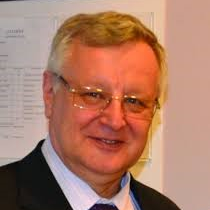Unmanned Aerial Vehicles for Future Networking Applications
A special issue of Sensors (ISSN 1424-8220). This special issue belongs to the section "Sensor Networks".
Deadline for manuscript submissions: closed (30 June 2021) | Viewed by 9776
Special Issue Editors
Interests: network planning; sensor networks; UAV networks; Internet of Things; tactile internet; 5G and beyond
Special Issues, Collections and Topics in MDPI journals
Interests: unmanned systems; wireless sensor networks; vehicular networks; flying ad hoc networks
Interests: modern wireless communications; 5G+ technologies and applications; Internet of Things; quality of service; Quality of Experience
Special Issues, Collections and Topics in MDPI journals
Special Issue Information
Dear Colleagues,
Advances in unmanned aerial vehicles (UAV) are enabling the development of a myriad new UAV-based systems which could not even be imagined some years ago. There are numerous possibilities, but of particular interest is the usage of UAVs to support future networking applications, for example, creating network infrastructure on-demand, which can be provisioned and released according to the current application needs. The emerging Internet of Things (IoT)-based applications, with massive distributed sensors, can benefit a lot from the employment of such UAV-based support. With the advance of 5G, 6G, and beyond technologies, this usage of UAV-based systems gains even more importance, as the number of possible beneficial applications grows significantly.
The goal of this Special Issue is to address this emerging field in which UAVs can be used to support future networking applications.
Topics of interest include but are not limited to the following:
- Novel applications of UAVs;
- Deploying UAV as a base station for 5G systems;
- Role of UAVs in 6G systems;
- On-demand wireless networking infrastructure;
- Massive distributed applications;
- Applications of UAVs for lifeline communications;
- Development of edge computing systems for UAVs;
- Offloading models and algorithms for UAV applications;
- UAVs to assist AR/VR systems;
- Deploying emerging technologies, e.g., SDN and Blockchain, for UAV systems;
- Emerging IoT-based applications;
- Application of UAVs in remote sensing;
- Flying sensors;
- Space-terrestrial networks.
Prof. Dr. Andrey Koucheryavy
Prof. Dr. Edison Pignaton de Freitas
Dr. Jiri Hosek
Guest Editors
Manuscript Submission Information
Manuscripts should be submitted online at www.mdpi.com by registering and logging in to this website. Once you are registered, click here to go to the submission form. Manuscripts can be submitted until the deadline. All submissions that pass pre-check are peer-reviewed. Accepted papers will be published continuously in the journal (as soon as accepted) and will be listed together on the special issue website. Research articles, review articles as well as short communications are invited. For planned papers, a title and short abstract (about 100 words) can be sent to the Editorial Office for announcement on this website.
Submitted manuscripts should not have been published previously, nor be under consideration for publication elsewhere (except conference proceedings papers). All manuscripts are thoroughly refereed through a single-blind peer-review process. A guide for authors and other relevant information for submission of manuscripts is available on the Instructions for Authors page. Sensors is an international peer-reviewed open access semimonthly journal published by MDPI.
Please visit the Instructions for Authors page before submitting a manuscript. The Article Processing Charge (APC) for publication in this open access journal is 2600 CHF (Swiss Francs). Submitted papers should be well formatted and use good English. Authors may use MDPI's English editing service prior to publication or during author revisions.
Keywords
- UAVs
- 5G
- 6G
- IoT
- AR/VR
- Massive distributed applications
- Flying sensors
- Emerging IoT-based applications
- Space-terrestrial networks
- Edge computing
- Offloading
- SDN








